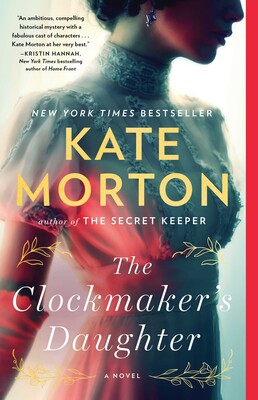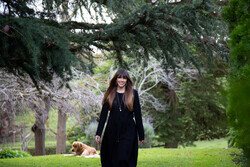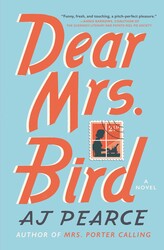The Clockmaker's Daughter
A Novel
LIST PRICE $18.99
Free shipping when you spend $40. Terms apply.
Buy from Other Retailers
Table of Contents
About The Book
From the author of the New York Times bestseller Homecoming—“An ambitious, compelling historical mystery with a fabulous cast of characters…Kate Morton at her very best.” —Kristin Hannah
“An elaborate tapestry…Morton doesn’t disappoint.” —The Washington Post
"Classic English country-house Goth at its finest." —New York Post
In the depths of a 19th-century winter, a little girl is abandoned on the streets of Victorian London. She grows up to become in turn a thief, an artist’s muse, and a lover. In the summer of 1862, shortly after her eighteenth birthday, she travels with a group of artists to a beautiful house on a bend of the Upper Thames. Tensions simmer and one hot afternoon a gunshot rings out. A woman is killed, another disappears, and the truth of what happened slips through the cracks of time. It is not until over a century later, when another young woman is drawn to Birchwood Manor, that its secrets are finally revealed.
Told by multiple voices across time, this is an intricately layered, richly atmospheric novel about art and passion, forgiveness and loss, that shows us that sometimes the way forward is through the past.
Excerpt
But Edward was no preacher.
I remember him. I remember everything.
--
The glass-roofed studio in his mother’s London garden, the smell of freshly mixed paint, the scratch of bristle on canvas as his gaze swept my skin. My nerves that day were prickles. I was eager to impress, to make him think me something I was not, as his eyes traced my length and Mrs. Mack’s entreaty circled in my head: “Your mother was a proper lady, your people were grand folk, and don’t you go forgetting it. Play your cards right and all our birds might just come home to roost.” And so I sat up straighter on the rosewood chair that first day in the whitewashed room behind the tangle of blushing sweet peas. His littlest sister brought me tea, and cake when I was hungry. His mother, too, came down the narrow path to watch him work. She adored her son. In him she glimpsed the family’s hopes fulfilled. Distinguished member of the Royal Academy, engaged to a lady of some means, father soon to a clutch of brown-eyed heirs.
Not for him the likes of me.
--
His mother blamed herself for what came next, but she’d have more easily halted day from meeting night than keep us apart. He called me his muse, his destiny. He said that he had known at once, when he saw me through the hazy gaslight of the theater foyer on Drury Lane.
I was his muse, his destiny. And he was mine.
It was long ago; it was yesterday.
Oh, I remember love.
--
This corner, halfway up the main flight of stairs, is my favorite.
It is a strange house, built to be purposely confusing. Staircases that turn at unusual angles, all knees and elbows and uneven treads; windows that do not line up no matter how one squints at them; floorboards and wall panels with clever concealments.
In this corner, there’s a warmth, almost unnatural. We all noticed it when first we came, and over the early summer weeks we took our turns in guessing at its cause.
The reason took me some time to discover, but at last I learned the truth. I know this place as I know my own name.
--
It was not the house itself but the light that Edward used to tempt the others. On a clear day, from the attic windows, one can see over the river Thames and all the way to the distant mountains. Ribbons of mauve and green, crags of chalk that stagger towards the clouds, and warm air that lends the whole an iridescence.
This was the proposal that he made: an entire summer month of paint and poetry and picnics, of stories and science and invention. Of light, heaven-sent. Away from London, away from prying eyes. Little wonder that the others accepted with alacrity. Edward could make the very devil pray, if such were his desire.
Only to me did he confess his other reason for coming here. For although the lure of the light was real enough, Edward had a secret.
--
We came on foot from the railway station.
July, and the day was perfect. A breeze picked at my skirt hem. Someone had brought sandwiches and we ate them as we walked. What a sight we must have made—men with loosened neckties, women with their long hair free. Laughter, teasing, sport.
Such a grand beginning! I remember the sound of a stream close by and a wood pigeon calling overhead. A man leading a horse, a wagon with a young boy sitting atop straw bales, the smell of freshcut grass— Oh, how I miss that smell! A clutch of fat country geese regarded us beadily when we reached the river before honking bravelonce we had passed.
All was light, but it did not last for long.
You knew that already, though, for there would be no story to tell if the warmth had lasted. No one is interested in quiet, happy summers that end as they begin. Edward taught me that.
--
The isolation played its part, this house, stranded on the riverbank like a great inland ship. The weather, too; the blazing hot days, one after the other, and then the summer storm that night, which forced us all indoors.
The winds blew and the trees moaned, and thunder rolled down the river to take the house within its clutches; while inside, talk turned to spirits and enchantments. There was a fire, crackling in the grate, and the candle flames quivered, and in the darkness, in that atmosphere of delicious fear and confession, something ill was conjured.
Not a ghost, oh, no, not that—the deed when done was entirely human.
Two unexpected guests.
Two long-kept secrets.
A gunshot in the dark.
--
The light went out and everything was black.
Summer was curdled. The first keen leaves began their fall, turning to rot in the puddles beneath the thinning hedgerows, and Edward, who loved this house, began to stalk its corridors, entrapped.
At last, he could stand it no longer. He packed his things to leave and I could not make him stop.
The others followed, as they always did.
And I? I had no choice; I stayed behind.
Reading Group Guide
Introduction
In the summer of 1862, a group of young artists led by Edward Radcliffe descends upon Birchwood Manor on the banks of the Upper Thames. Their plan: to spend a secluded summer month in a haze of inspiration and creativity. But by the time their stay is over, one woman has been shot dead while another has disappeared; a priceless heirloom is missing; and Edward Radcliffe’s life is in ruins.
More than one hundred and fifty years later, Elodie Winslow, a young archivist in London, uncovers a leather satchel containing two seemingly unrelated items: a sepia photograph of an arresting-looking woman in Victorian clothing, and an artist’s sketchbook containing the drawing of a twin-gabled house on the bend of a river.
Why does Birchwood Manor feel so familiar to Elodie? And who is the beautiful woman in the photograph?
Topics & Questions for Discussion
1. The Clockmaker’s Daughter begins with the assertion that “We came to Birchwood Manor because Edward said that it was haunted. It wasn’t. Not then.” (p. 3) Who is narrating this passage? How does it create a sense of mystery surrounding Birchwood Manor? What are your initial impressions of the ground and house at Birchwood Manor?
2. Birdie describes Lily Millington as “her salvation.” (p. 99) How does Lily help Birdie adjust to life at Mrs. Mack’s? What survival skills does Lily teach Birdie? How else does Lily impact Birdie’s life and legacy?
3. Birchwood Manor feels like another character in the book. Edward writes “it has called to me for a long time, you see, for my new house and I are not strangers.” (p. 210) Discuss the connection that Edward feels to the house. What other characters feel a strong connection? Have you ever felt an attachment to a house where you’ve lived or visited?
4. Why do you think Kate Morton chose to title her novel The Clockmaker’s Daughter? Who is she? How does her story tie the other plotlines in the novel together? Did you find any of the connections surprising?
5. One of Edward’s most famous paintings is View from the Attic Window. Describe the painting? Birdie says that when she views the painting, “I do not associate it with the fields outside Birchwood Manor . . . it makes me think instead of small dark spaces, and stale air.” (p. 337) Why does View from the Attic Window make her feel claustrophobic? Describe the inspiration behind the painting.
6. Describe Elodie’s relationship with Alastair. She “had been flattered when [he] asked her to marry him.” (p. 24) Explain this statement. Why do you think that Elodie says yes to Alastair’s proposal? When does Elodie begin to realize they’re not well suited?
7. Why do you think that Pale Joe shows Birdie kindness? Describe their friendship. What does each offer the other? Were you surprised to realize who Pale Joe is? Why do you think Birdie is willing to share her nickname with Pale Joe?
8. Storytelling is a central theme in the novel. When Elodie asks her father about the bedtime story from her childhood, he tells her that he thought it might be too scary for a child but that Lauren, Elodie’s mother, felt that “childhood was a frightening time and that hearing scary stories was a way of feeling less alone.” (p. 20) Do you agree with Lauren? What other purposes does storytelling serve? How does Kate Morton connect the characters within The Clockmaker’s Daughter?
9. Penelope suggests that Elodie walk down the aisle at her wedding accompanied by a video of her mother, Lauren Adler, playing the cello. Why do you think that Penelope makes the suggestion? What does Pippa think? Do you agree with her? Why or why not? Were you surprised by Elodie’s final decision with regard to the videos? Explain your answer.
10. Elodie handles the archives of James Stratton. Who is he and why are his archives significant? Were you surprised to learn of his connection to Birchwood Manor? Based on James’s romantic history, “[i]t seemed to Elodie almost as if he’d set our purposely to choose women who wouldn’t—or couldn’t—make him happy.” (p. 16) Do you agree? Why do you think that James chose the partners that he did?
11. According to Birdie, Fanny “has become a tragic heroine, impossible though that is for one who knew her in life to believe.” (p. 131) What did you think of Fanny? Describe her relationship with Edward. Compare his relationships with Fanny and Birdie. How is Edward different when he is with Birdie?
12. What did you think of Mrs. Mack? What kind of activities does she require Birdie to take part in to earn her keep? Why do you think that Mrs. Mack takes pains to remind Birdie that her mother had been a proper lady? Do you think she takes good care of Birdie?
13. When Ada learns that she is going to be staying at Miss Radcliffe’s School for Young Ladies, the narrator writes “School. Young ladies. Welcome. Ada liked words—she collected them—but those four hit her like bricks.” (p. 159) What do you think of Ada’s school and how her parents told her that she would be attending?
14. “Ada’s parents had left her at Miss Radcliffe’s School for Young Ladies in the misguided expectation that she would be magically transformed into a proper English schoolgirl.” (p. 164) Do you agree that this is the mission of Miss Radcliffe’s school? Does she achieve it? Explain your answer.
15. What did you think of Jack? How does his life intersect with Elodie? What do they discover together? How does their chance encounter affect their lives?
Enhance Your Book Club
1. When Tip and Elodie discuss her impending wedding, Tip asks about Alastair, telling her, “It’s important to pick someone who can make you laugh.” (p. 89) Discuss Tip’s advice with your book club. What traits do you think are important in a romantic partner? What advice would you give to Elodie as her wedding approaches?
2. Many of the characters receive meaningful gifts in The Clockmaker’s Daughter. Edward gives Birdie a clock and Elodie receives a hand-crafted trinket box from her great-uncle Tip. Discuss why these gifts are so meaningful to each of the women. Have you ever received any gifts that were particularly significant to you? Describe them to your book club taking the time to explain why they were so important.
3. As an eighteen-year-old student at Oxford, Leonard discovers Modern Art, a discovery that “transformed rapidly into a passion.” (p. 211) Leonard is stirred by Marcel Duchamp’s Nude Descending a Staircase, No. 2 and Picasso’s Les Demoiselles d’Avignon. View these paintings and discuss them with your book club. Why do you think Leonard finds them so inspiring? What did you think of the paintings?
4. When Ada asks Shashi to tell her a story during the daytime, she expects Shashi to say “no” because “Ada knew the rules. The best storytellers only ever spoke by dark.” (p. 153) Do you agree with Ada? What do you think makes for a good storyteller? Are there any stories you remember from your childhood?
5. To learn more about Kate Morton, visit her official site at KateMorton.com, read about her other books, and find out when she will be in a city near you.
Chronology of Birchwood Manor
1854 Edward Radcliffe, fourteen years old, is sent to stay with his grand- parents in Wiltshire for the summer. Intending to raise a ghost, one dark night he instead discovers Birchwood Manor.
1860 Edward Radcliffe, now a successful artist, purchases Birchwood Manor, a house on the Upper Thames.
1862 The founding members of the Magenta Brotherhood travel from London to Birchwood to spend a summer month at Edward Radcliffe’s house.
1862 Frances Brown is murdered in a robbery at Birchwood Manor. An- other woman disappears.
1882 Lucy Radcliffe inherits Birchwood Manor after her brother’s death.
1883 Miss Radcliffe’s School for Young Ladies opens for business in the village of Birchwood.
1899 Ada Lovegrove, aged eight, arrives at Birchwood Manor to attend Miss Radcliffe’s School for Young Ladies.
1901 Miss Radcliffe’s School for Young Ladies closes down.
1928 Lucy Radcliffe donates Birchwood Manor to the Art Historians’ Association for use as a Residential Scholarship for students.
1928 Leonard Gilbert, a doctoral student at Oxford University, is awarded a three-month Residential Scholarship to live at Birchwood Manor.
1928 Alan and Juliet Wright, newlyweds, spend their honeymoon at the Swan, a public house in the village of Birchwood.
1940 Evacuated from London, Juliet Wright and her three children take up residence at Birchwood Manor during the Second World War.
1980 The Art Historians’ Association receives a bequest enabling it to begin converting Birchwood Manor into a museum.
2017 Jack Rolands, a former policeman, travels from Australia to Birch- wood Manor, having been engaged to search for something that has been lost.
2017 Elodie Winslow, an archivist with Stratton, Cadwell & Co. in London, arrives at Birchwood Manor seeking to determine the provenance of an old sketch of the house
Product Details
- Publisher: Atria Books (May 21, 2019)
- Length: 496 pages
- ISBN13: 9781451649413
Raves and Reviews
“An elaborate tapestry . . . Morton doesn’t disappoint.”
– Washington Post
"Classic English country-house Goth at its finest."
– New York Post, Required Reading column
“The Clockmaker’s Daughter is an ambitious, complex, compelling historical mystery with a fabulous cast of characters. This is Kate Morton at her very best.”
– Kristin Hannah, New York Times bestselling author
"Morton leisurely layers Gothic details with classic romantic suspense, shifting between past and present, spinning involving stories within stories."
– Minneapolis Star Tribune
"...the stories, brilliantly told by Morton, offer musings on art, betrayal, and the ways in which real lives and real places can evolve over time into the stuff of legends"
– Publishers Weekly, starred review
"A leisurely and meditative read, with lush settings, meticulous period detail, and slowly unfurling enigmas."
– Kirkus Reviews
"[Morton's] most ambitious work yet...Morton proves once again that history is not a straight line but an intricate, infinite web"
– Booklist
"Morton does again what she’s done so well in international best sellers from The House at Riverton to The Lake House."
– Library Journal
"Like the house itself, the novel contains hidden corners and unexpected twists...Fans of Morton's atmospheric novels will find much to enjoy here."
– Shelf Awareness
Awards and Honors
- Paradies Lagardere Fiction Airlines Pick
Resources and Downloads
High Resolution Images
- Book Cover Image (jpg): The Clockmaker's Daughter Trade Paperback 9781451649413
- Author Photo (jpg): Kate Morton Photograph by Davin Patterson(0.1 MB)
Any use of an author photo must include its respective photo credit
























